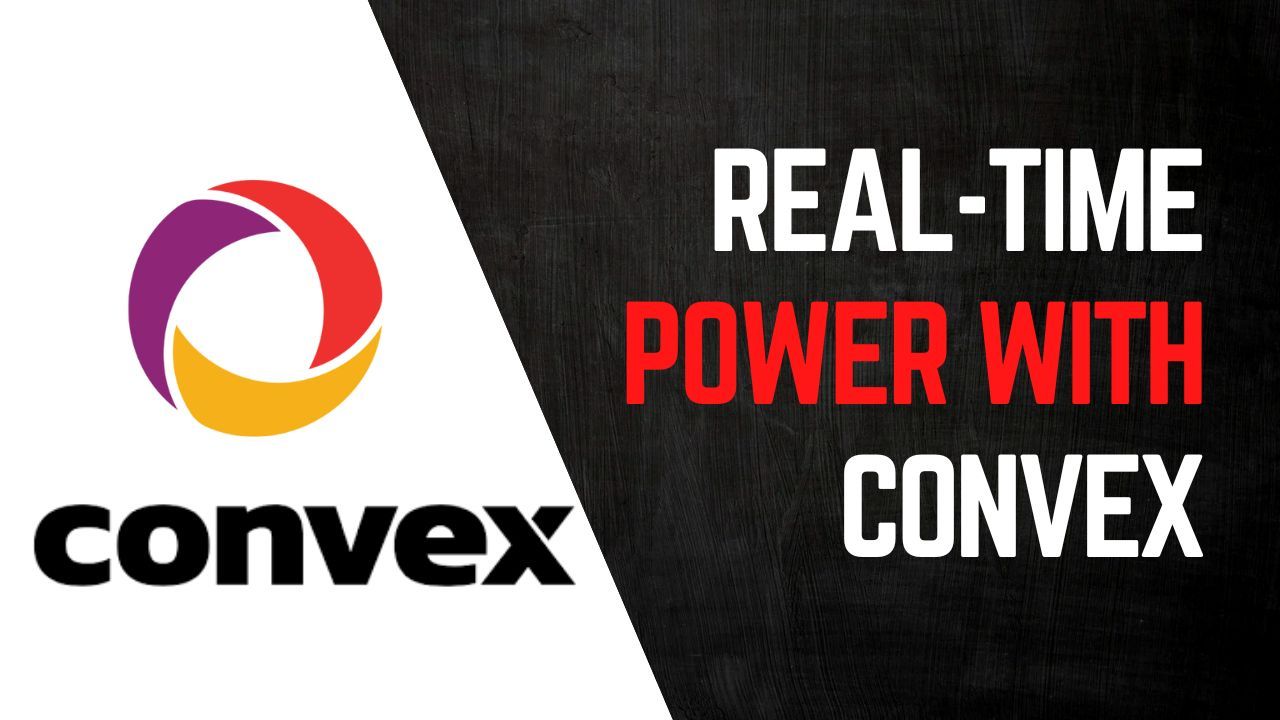Choosing the Perfect Database: Why Convex for Real-Time Applications

Habibullah Bahar
September 24, 2024

In today's fast-changing world of app development, choosing the right database is key to ensuring good performance, scalability, and user experience. Recently, I built a real-time messaging app using Convex, a serverless and reactive data platform. This experience helped me understand when Convex is the best option and when traditional databases like MySQL or PostgreSQL might be a better fit.
Why I Chose Convex for a Real-Time Messaging App
Convex is designed for applications where real-time data synchronization, scalability, and low-latency operations are critical. In my messaging app, users required instant updates for messages, reactions, and replies. Convex stood out for several reasons:
1. Real-Time Updates by Default
Convex offers real-time updates right away, so users receive instant feedback. This means you don’t have to deal with complicated tools like WebSocket or polling, which can make your application more complicated than needed.
2. Easy to Use
Setting up real-time queries and mutations in Convex is simple. It abstracts away the need to manage servers, which can be particularly helpful when you're focusing on features rather than infrastructure. This allowed me to build a scalable real-time messaging app without worrying about low-level configurations.
3. Reactive Programming Model
Convex's reactive programming model means that any changes in the database automatically propagate to subscribed clients. In a messaging platform where users expect live updates (e.g., new messages, replies, reactions), this feature was essential to maintaining responsiveness.
4. Serverless and Scalable
With Convex being serverless, it scales seamlessly with traffic spikes. This is crucial for real-time applications where user activity can be unpredictable. There’s no need to manually configure or optimize servers for scale, allowing developers to focus on building features.
5. File Storage Simplified
Convex includes built-in support for handling file storage, which was particularly useful for my messaging app where users can send images and documents. This integrated file storage feature allowed me to manage uploads directly in the app without needing to rely on external services, keeping both files and messages tightly coupled in the same environment.
6. Simple and Secure Authentication
Convex makes it easy to set up secure authentication with built-in support for user login and access control. Whether you're using OAuth or other methods, Convex handles the complexities of user management, ensuring that only authorized users can access the app's data. This simplifies the process of managing user sessions and permissions, while keeping everything secure.
When Convex Might Not Be the Best Fit
Although Convex was the perfect choice for my messaging app, there are scenarios where traditional SQL databases or other services might be more appropriate.
1. Complex Query Requirements
Convex is optimized for real-time, reactive use cases, but when it comes to handling highly complex queries (like multi-table joins and complex aggregations), traditional SQL databases such as PostgreSQL or MySQL might offer more flexibility. These databases have been around for decades and provide extensive query capabilities, optimized for a wide range of business logic.
2. Transaction Handling
Convex is great for handling single documents, but it may not be the best choice if your app needs to work with multiple documents or tables at the same time. SQL databases excel in this area. For example, in large e-commerce sites or financial systems, it's important to ensure that transactions are reliable and consistent, which often requires using a relational database that follows ACID (Atomicity, Consistency, Isolation, Durability) principles.
3. Long-Term Data Analytics
If your application requires complex data analytics, reporting, or long-term storage, you may benefit from the advanced querying and indexing capabilities of SQL databases. They are often better suited for data warehouses and business intelligence systems, where historical data needs to be queried efficiently.
When to Choose Convex
- Real-time applications: Messaging apps, live collaboration tools, real-time dashboards, etc.
- Small-to-medium applications: Where ease of setup and scalability are critical.
- Serverless architecture: If you don’t want to manage infrastructure.
- Low-latency operations: When users expect real-time updates without delay.
When to Consider Other Options
- Data-heavy applications: With complex joins, reporting, or data warehousing needs.
- Transactional systems: E-commerce platforms, banking apps, or other systems requiring complex transactions.
- Enterprise-grade analytics: Where historical data queries and analysis are necessary.
Conclusion
Having used Convex for a real-time messaging application, I found its reactive, serverless nature perfect for the task. Convex’s ability to handle real-time updates seamlessly gave my app a huge performance boost, especially in terms of user experience. However, for applications requiring complex transactions or heavy analytics, SQL databases like PostgreSQL or MySQL are still strong contenders.
Ultimately, the choice between Convex and traditional databases boils down to your application's requirements. If you're building a real-time app where responsiveness and scalability are critical, Convex may be your best bet. However, if your focus is on complex queries, transactions, or analytics, a traditional SQL database might be the more reliable option.
For learning more you can visit https://docs.convex.dev/home